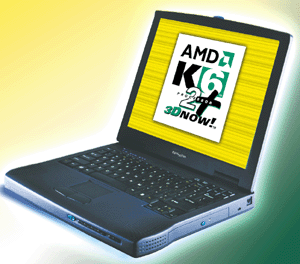What is the Athlon 4?
You know by now that the Palomino core is what is new about the Athlon 4, but what is exactly different about it? Originally, the Palomino core was supposed to be a minor update to the Thunderbird core that reduced power consumption and heat dissipation by approximately 20%. However that didn't exactly happen on time and instead AMD pushed the release of the Palomino core back a few months. The result of all of this is that the Palomino core actually offers a little more than just a 20% reduction in heat.
For starters, the Athlon 4 is the basis of AMD's four-tiered product line which will be unfolding over the next few weeks and months. The Athlon 4 processor will eventually become the replacement for their current Athlon desktop processor. This replacement won't come until August meaning that, other than the impending 1.4GHz launch, you won't see another "desktop" release from AMD until then. As we predicted back in our CPU Roadmap Update for 2001, the Athlon 4 core will most likely debut in a desktop version at 1.5GHz. The Athlon has already been a huge success in the desktop market and the Athlon 4 will only continue that success and allow it to be more competitive with the Pentium 4 as its counterpart proceeds to aggressively ramp up in clock speed throughout the course of this year.
 The
second use for the Athlon 4 processor and what it's actually being used in today
is in mobile computers. Until now AMD's entire mobile line has actually been
pretty disappointing. Their mobile line has been based off of their K6-II+ and
K6-III+ processors which have limited AMD's success in the mobile market. While
both of these processors were good for their time they can't compete with Intel's
mobile Pentium III and mobile Celeron parts, especially when it comes down to
allowing for smaller notebooks.
The
second use for the Athlon 4 processor and what it's actually being used in today
is in mobile computers. Until now AMD's entire mobile line has actually been
pretty disappointing. Their mobile line has been based off of their K6-II+ and
K6-III+ processors which have limited AMD's success in the mobile market. While
both of these processors were good for their time they can't compete with Intel's
mobile Pentium III and mobile Celeron parts, especially when it comes down to
allowing for smaller notebooks.
The Athlon 4 being used in the mobile market will change all of that. We already know that the Athlon core is a higher performing desktop part than the Pentium III. And in the mobile market, we expect to see similar results from the Athlon 4 (we'll get into performance a little bit later).
The third function of the Athlon 4 is as AMD's first high-performance workstation processor. Next month AMD will be announcing their 760MP platform, and the Athlon 4 is the first Athlon processor to officially support dual processor operation. The workstation version of the Athlon 4 will be launched alongside this platform.
And the final role of the Athlon 4 will be to kick off AMD's entry into the multiprocessor server market. The MP server market is a very lucrative business for AMD to get into since the profit margins are so high, just look at the profit margins off of Intel's Pentium II Xeon and Pentium III Xeon parts to see the potential for AMD there. However the Athlon 4 will only be a stepping stone for AMD into this market; AMD's 64-bit solutions will truly be the ones to lead the company in this area.
Now that we know the four major roles of the Athlon 4, here's the most important point. The Athlon 4 core that is used in all four of these roles is the exact same core. In fact, the exact same interface is used in the mobile, desktop, workstation and server Athlon 4 processors. This means that the Athlon 4 that is being launched in notebooks today is simply a lower clocked version of the workstation/server Athlon 4 that will be launched in June. And the workstation/server Athlon 4 is nothing more than a lower clocked version of the desktop Athlon 4 that will be launched in August.
Not interested in notebook performance? Well this particular notebook has the same processor that your next desktop might have so pay attention.










0 Comments
View All Comments